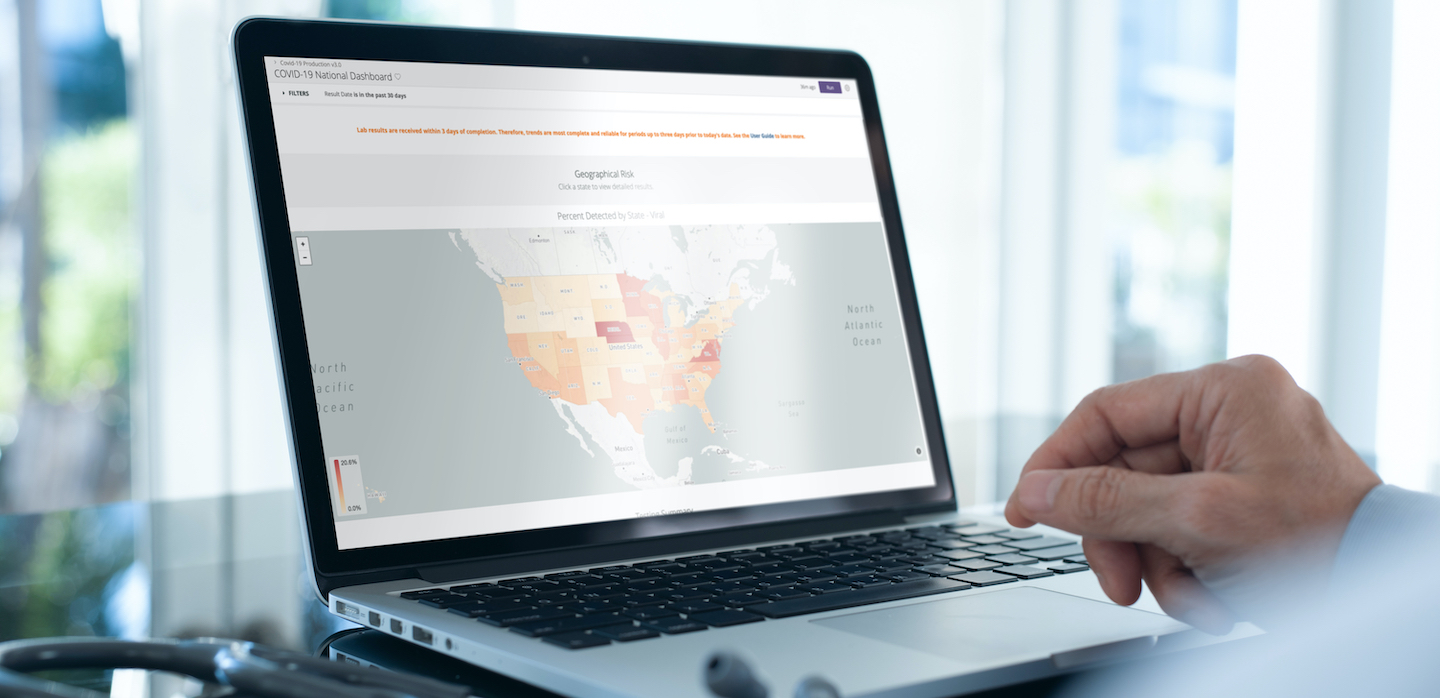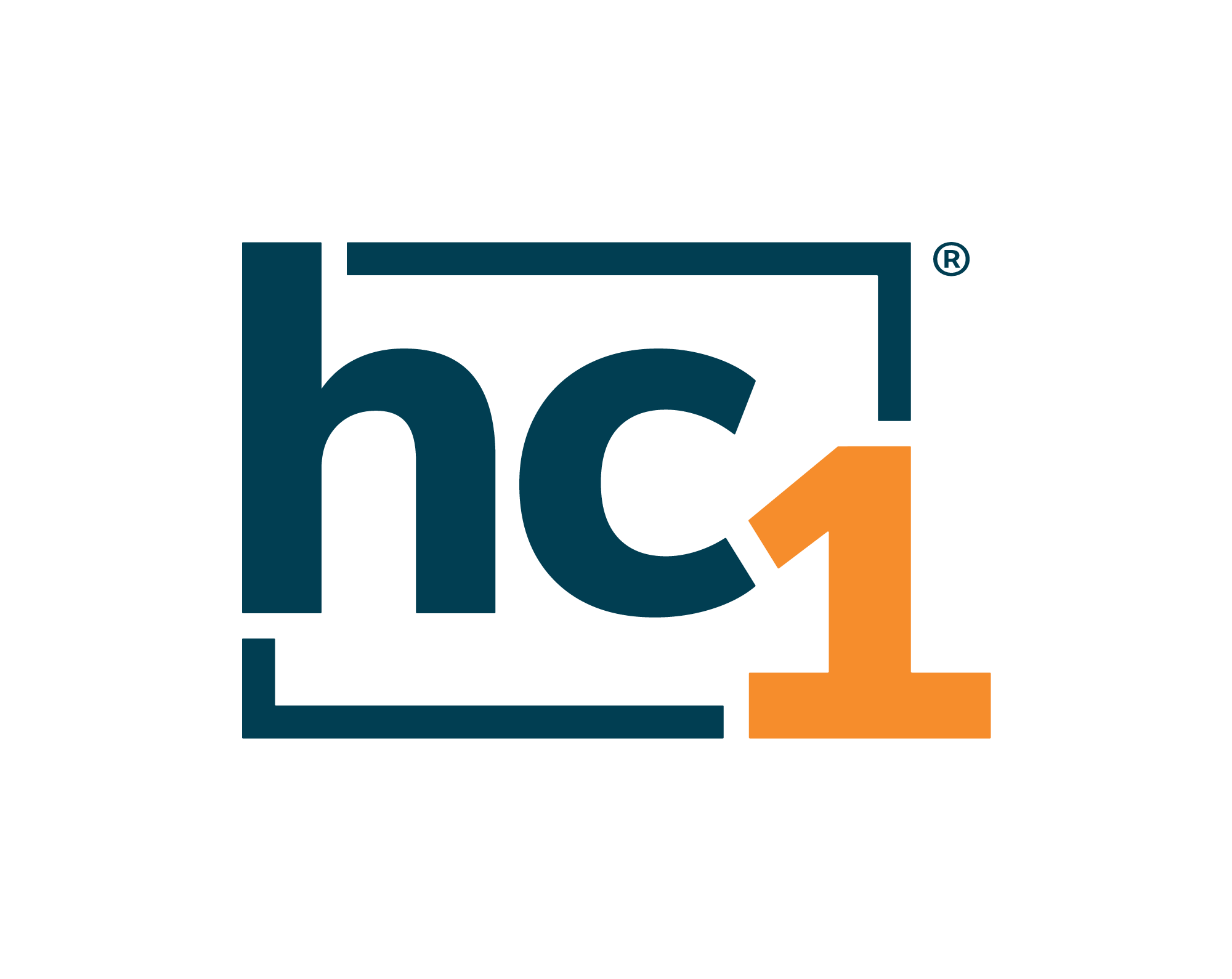Survive & Thrive: hc1 lab data insights powered proactive mitigation of COVID-19
When CEO and Chairman Brad Bostic founded hc1 in 2011, he was frustrated by our healthcare system’s one-size-fits-all, trial-and-error approach to patient care.
As the leader in critical insight, analytics, and solutions for precision health, hc1 is designed to save lives, save money in the healthcare industry overall, and eliminate wasteful practices and spending. The hc1 Platform transforms lab and prescription data into personalized insights using cloud computing and machine learning to empower doctors and other healthcare leaders to make informed decisions to ensure the patient receives the right prescription, in the right dose at the right time.
Brad and his team could not have predicted the overwhelming disruption of a global pandemic that forced many businesses to close and others to pivot operations for a remote workforce. But their response made a global impact in how the healthcare industry responded to COVID-19 and earned the company a nomination for the 2021 Mira Pandemic Pivot of the Year.
Early in 2020, team members realized that the platform they’d built had the power to solve a very real challenge for government, education and health care administrators who lacked the information needed to measure and mitigate the local spread of COVID-19.
“Communities across the U.S. — not only Indiana — struggled to access detailed insights about the spread of COVID-19 at the hyperlocal, sub-county level,” Brad said. “Business and community health leaders needed live insight to execute effective response strategies, enact mitigation and plan for a return-to-work and school strategy, but there wasn’t a way to combine snapshots of infection rates into a single, dashboard and have it updated at the same speed as COVID-19’s spread.”
Unlocking the power of lab data
Uniquely positioned to unlock the power of lab data, the hc1 platform was designed to transform care delivery by organizing live laboratory, genomic and medication data — integrating more than 22 billion clinical transactions — into personalized profiles at population scale. Armed with more than 40% of COVID-19 lab test results funneling into its platform, hc1 shifted its resources and released the CV19 Lab Testing Dashboard™ and the hc1 Local Risk Index™ (LRI) in April 2020, which identified an acceleration of patient volumes with symptomatic COVID-19 and allowed leaders to enact proactive responses to alleviate strains in the healthcare system and ICUs that were filling up around the state and the country.
“Many leaders were using mortality rates, ICU capacity and ventilator availability to understand the rate of spread in a community,” Brad explained. “Unfortunately, when the hospital is over capacity it’s too late to implement basic prevention measures, such as mask-wearing and social distancing. The LRI made it possible to have advanced warning of an infection spike and allow leaders to act and potentially prevent an outbreak before it starts.”
The CV19 Lab Testing Dashboard filled a significant void to assess the pandemic’s spread at a local level. One example includes Memorial Day 2020 when many states eased stay-at-home orders and people gathered in large groups to celebrate. In June, hc1’s LRI showed upward trends and infection hotspots in states like Florida, Texas, Arizona, and California, 5-21 days before state and national dashboards. Early warnings gave public health officials an opportunity to mitigate the spread on a localized basis before ER visits and hospitalizations skyrocketed in those states. Another example of the void that hc1’s dashboard filled comes from Eli Lilly & Company, which asked hc1 to analyze datasets from its drive-through testing site. Lilly had collected anonymized patient responses and demographics to learn more about how COVID-19 was spreading within essential worker populations such as healthcare workers, first responders, and other crucial personnel.
“We worked with Lilly to aggregate and analyze data points collected from their testing sites for first responders that hadn’t been historically collected by any other lab,” Brad said. “The targeted first responder data generated by the hc1 powered Lilly Dashboard illustrated Central Indiana infection rates and offered early insight into the risks posed to essential workers.”
More than 14,000 drive-through test results and the corresponding information provided the most comprehensive COVID-19 dataset available at the time. Eli Lilly and hc1’s collaboration and the public release of the Lilly CV19 Drive-Through Testing Dashboard in July 2020 enabled local officials to identify infection risk factors and symptom patterns within a specific, demographic population for the first time.
Further leveraging its data, the company launched hc1 Workforce Advisor™ in May 2020, which was designed to allow employers and universities to slowly return to work and school by measuring and reporting the risk of infection in the community and the workplace. Similar to how air travelers use TSA PreCheck, employees or students could receive a digital ID that verifies negative test results and allows them to access specific parts of the building or campus.
Using technology to expose issues with data value chain
“The pandemic certainly put a very bright, hot, light on the issue of medical data silos and the fact that we don’t have a health care data value chain set up today in a way that really is acceptable,” Brad said. “We’re demonstrating that when you have live, high fidelity access to massive volumes of diagnostic lab tests, in the results you can actually identify these signals that, in a way, are very clear down to a hyper-local level and with the right kinds of collaboration with the providers you can go all the way to drive the interventions that are needed to create the positive change.”
“COVID-19 response is just one example in which this critical data organization, normalization and availability are critical. Because more than half of all the diagnostic lab results in the country are ingested into the hc1 Platform, we were able to identify hidden risk signals that indicate there’s some kind of a need for a health response,” he added. “By effectively connecting a precision health insight network that’s national in scale, and using the right kinds of technologies, and informing all of these data points into a common, normalized model you can actually do this for really any disease state.”
The ability to see the larger picture of how health care in America could be improved by precision medicine and the company’s mantra to establish a connected, cloud computing healthcare system solutions, or Precision Health Insight Networks (PHINs), were crucial in the development of its COVID-19 dashboards and subsequent return-to-work strategies.
It is one reason that hc1 was able to survive during the pandemic. The company will thrive in the future because it equips doctors and healthcare systems with the tools needed to provide more precise, high-value care for patients, which has been proven to save money and improve patient outcomes. Long after 2020, hc1 plans to ensure communities can proactively respond to future health crises and better the lives of Hoosiers and those beyond our borders.





